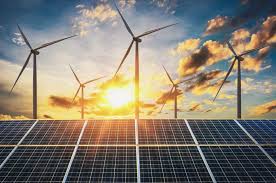The offshore wind industry enjoyed its best-ever year in 2021, with just over 21GW of new capacity connected to the grid, according to the latest Global Offshore Wind Report launched by the Global Wind Energy Council (GWEC).
The report, launched to coincide with the United Nations Ocean Conference in Lisbon, shows there was a three-fold increase in grid connection worldwide from 2020 to 2021, with 21.1GW of new installations bringing global capacity to 56GW.
Year-on-year growth of 58% means offshore wind now represents 7% of total global cumulative installations, according to the report. China contributed 80% of new offshore installations last year, which makes 2021 the fourth year the country has led the world in new installations.
Vietnam’s proactive approach delivered further capacity, and the Global Offshore Wind Report 2022 forecasts that by the end of 2022 Asia will replace Europe as the world’s largest offshore market.
The report suggests it could take until 2031 for Europe to regain the crown. In 2021 floating offshore wind passed the demonstration stage and entered the pre-commercial phase, with 57MW of new installations bringing the total installed globally to 121.4MW, according to the report.
Of those new installations, 48MW were in the UK, 5.5MW in China and 3.6MW in Norway. This comes as governments turn to the technology and establish ambitious new targets in their search for energy security and affordability, and strive to meet new net zero emissions ambitions.

Govts’ get more Ambitious about Offshore Wind
The implementation of these upgraded targets should start to deliver yet more record-breaking years from 2025 onwards, GWEC forecast. Also, GWEC’s Global Offshore Wind Report 2022 showed that governments are getting more ambitious about offshore wind.
GWEC Market Intelligence revised up its outlook for 2030 by 45.3GW, or 16.7%, from last year’s report and believes that 260GW of new offshore wind capacity could be added in 2022-2030.
Speaking from UNOC in Lisbon, GWEC chief executive Ben Backwell said:
“Now we need to work to rapidly implement targets and ambitions, while building a health and ‘fit for growth’ global supply chain. At the same time, the wind industry needs to take its place as a key custodian of a healthy Ocean ecosystem, as it becomes one of the world’s most important marine-based industries.
“We need to work with stakeholders and communities in the ocean environment to ensure that we scale up in a way that ensures holistic cooperation and planning and ensures the highest level of harmony with biodiversity and conservation goals. Working together we can deliver a clean and secure energy system that delivers power while helping the world reach net zero.”
Ben Backwell
Orsted vice president and head of regulatory affairs Ulrik Stridbæk added:
“The global offshore wind industry is at a critical inflection point. On one hand, we see political ambitions increase exponentially. But on the other hand, the industry is facing increasing costs and disrupted supply chains, jeopardising its long term ability to realise these targets.
“GWEC’s Global Offshore Wind Report is a crucial moment to take stock and convene the industry to discuss how to overcome these challenges and unlock the investments needed for offshore wind to play its part in keeping 1.5 degrees alive.”
Ulrik Stridbæk
READ ALSO: Putin’s Cousin Among Inner Circle Targeted by new UK Sanctions





















